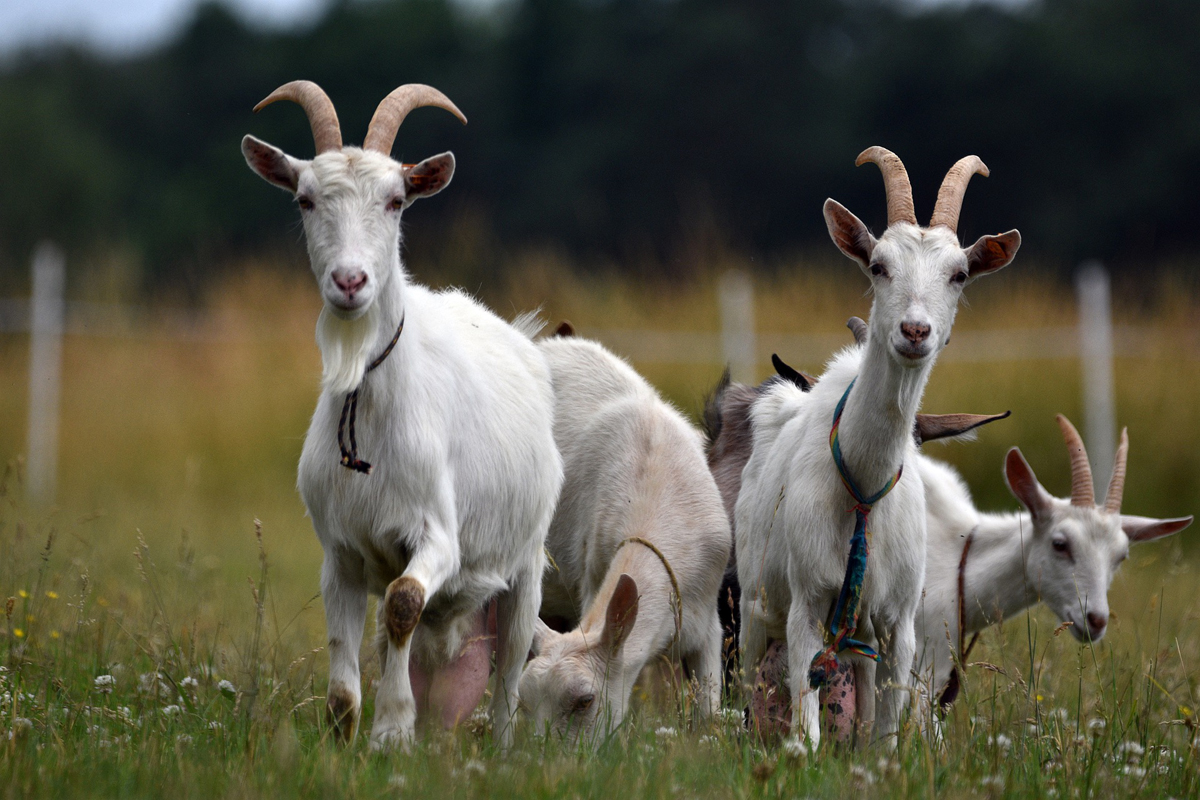Sheltering
To raise goats, the first thing that you must do is build a pen to hold your goats. A four feet high mesh fence will work well.
It is tall enough that a goat will not jump over it or get their head caught in it. High-tensile electric fencing is a good choice for goats; it looks like a smooth wire strung tight. It is relatively cheap, easy to build and has long life.
How big your pen is going to be depends on how many goats you wish to raise. It is better and advisable that you should put no more than four goats on an acre of land.
This gives them plenty of room and a lot of land to graze, although, some breeds are relatively larger than others and therefore require more space.
For a smaller goat, such as a Nigerian dwarf, a dog house will do. For the floor, dirt floors are fine, and many people prefer them because their excess urine will soak into the ground, and you will need less bedding, hence easier care.
What to Feed Them
Depending on the particular breed you have in mind to raise, you will only need to feed them hay and some type of supplement on a daily basis.
Water is by far the most important nutrient. Animals can go a long time without food but not without water.
Goats generally drink 1/2 to 1 1/2 gallons of water per day. A big tip on how to raise goats is to feed them primarily hay. Hay is made of grasses or legumes that have been cut at an early stage of their development and allowed to dry in the sun.
It should be green in color and be grass grown specifically for feed, such as orchard grass, alfalfa and timothy grass. The quality of the hay is determined by how it is cured in the field. If it rains while the hay is drying, then it loses its nutritional value and could mold.
But on the other hand, if the hay gets too dry, the nutrition will be shattered and lost during the baling process. The best hay for goat care is alfalfa or clover hays but don’t feed them white clover as it is poisonous because of its high level of protein and calcium.
Another option is to feed them grain and they could eat most vegetable food scraps. They will also keep your yard mowed by munching the grass.
Reproductive Management
Goats are generally seasonal breeders, meaning they come into heat (estrus) and breed during the fall as days grow shorter. The normal breeding season for most goats is August to March, though some breeds and individuals will breed all year long.
A doe’s gestation lasts about five months or 150 days. Normal delivery takes place at the nose between the two fore legs. After birth, the kids are required to take vaccinations in order to keep them fit and healthy.
For those of you who enjoy tiny details, once you have decided to breed goats, you must make sure that you breed only well-conditioned goats. They must be healthy, well-fed but not fat because fat causes goats many problems in conceiving and kidding.
Many goat raisers practice “flushing” which means controlling the does’ nutrition intake before the breeding season sets in. This practice keeps the does in optimum condition for breeding, and helps them to produce optimum eggs during ovulation which gives them greater chances of conceiving more.
Selection means using the most desirable goats or choice goats for the particular purpose of reproduction. Through selection, the breed is improved. Breeding goats can be done through inbreeding or line breeding, cross breeding and line crossing.
Inbreeding requires mating of related goats. This results to uniform offspring in terms of performance and appearance.
Cross breeding is done between two different goat breeds. Its advantages include increase in reproductive efficiency and vigor. Line crossing means the crossing of different blood lines within a breed.
The final outcome of breeding goats ultimately depends on you want and the method you choose in achieving it. And with the exception of cross breeding, the end goal is to get consistent progeny from generation to generation.
Economics
Producing meat goats can be profitable, but pay strict attention to details. You should control the feed costs and keep your production levels high. That way, the cost of raising your goats will be relatively low in cost, and the returns eventually will be high.
There now, you see that raising goats is quite a joy. I’ve put together these steps and first-rate tips for you to take your first steps to raising goats from scratch without the fear of making costly mistakes along the way.
So, in a couple of week’s time, you will most likely be able to visually see some results. Goats require a minimal investment and a high return on it. When you sell your goats you can expect to receive from $50 to $300 for each goat.
The Author:
